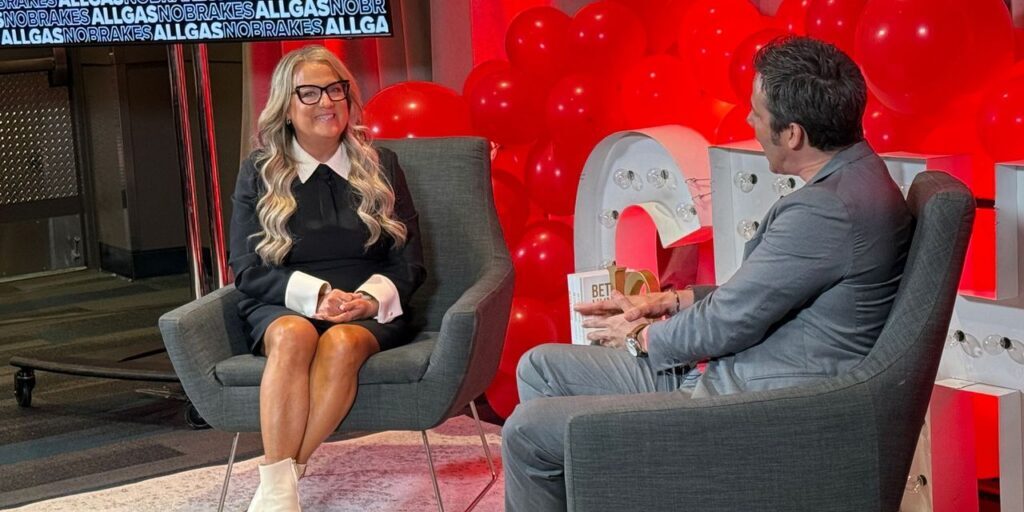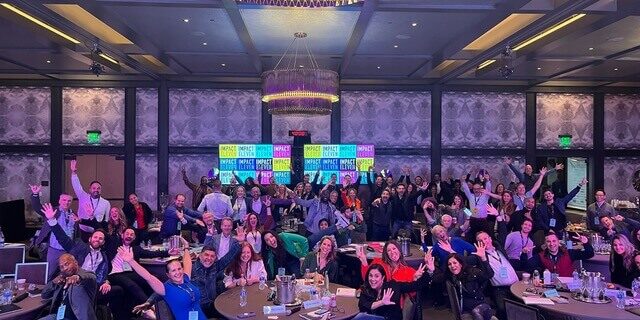“After the last exhalation, inhale one final time, as deeply as you can. Then let the air out and stop breathing. Hold until you feel the urge to breathe again.”
Dr. Matt and Dr. Andy guided us through the breathwork. I had no problem with the breathing. My problem was the exceptional discomfort from the freezing water I was sitting in. I wanted to get out of the cold tub, and I would have — had it not been for the 10 other brave souls breathing and freezing alongside me.
It was my first introduction to Peak Health Lab. And I was hooked.
Peak is a state-of-the-art facility devoted to fitness, recovery and wellness in Minneapolis. It’s owned by Josh Savage and his wife, Sheree. Together, the two also own Hero Plumbing, Heating and Cooling, a family-owned business that Josh took over from his father at age 25. When I walked into Peak Health Lab the first time for a facility introduction event, Josh kicked off the night with a bit of background on the lab’s genesis and his vision for the future.
Taking on the Challenge
Josh never imagined that he would own his father’s plumbing and cooling business. During his twenties, he worked various jobs, including firefighting in the Mountain West, serving as an auto mechanic, and serving our country in Iraq as an engineer officer in the Minnesota National Guard. But while finishing college at St. Cloud State, Josh’s father asked him to help with his business. At the same time, Josh was taking a small business class. He did a case study on his father’s business and realized there was an immense opportunity for growth.
And so, at age 25, Josh and Sheree bought the business from his father. The business offered an opportunity to marry Josh’s passion for business and marketing with his passion for working with his hands. He also welcomed the challenge. He’d supervised people 10 to 15 years older than him in construction projects in Iraq. He was no stranger to ambition — or tough assignments.
Josh had a vision for growth. He focused on marketing and customer experience, and he grew consistently year after year. There was just one problem: His team members were burning out.
Growing Pains
As Josh soon learned, his growth model was unsustainable. It came at a deep cost to his culture and his people’s well-being. “I wore them out,” Josh shared. “Everyone got stretched thin.”
It was a difficult moment that ultimately proved to be a defining one for Josh. He considered himself a “people person.” He had close relationships with many of his employees, and his growth model was straining those relationships, too. He was frustrated, especially as he saw skilled team members move on to competitors.
But he also recognized that turnover was a sign of larger issues. “Eventually, I was able to get to the place where I could ask, ‘Okay, what’s the truth in the situation?’” he says. It led him to a realization: “You can’t punch an employee in the mouth and then send them to a customer and think he’s going to create great experiences.” Instead, Josh had to figure out how to create an excellent experience for his employees.
To do that, Josh turned to his team members. He surveyed them on the things he could do better, and when his employees told them they wanted a better, more inclusive environment, he listened. He designed more consistent work schedules so people could attend family events. He streamlined processes and systems throughout his company. Josh had been encouraging his team to do things how they saw fit, but he found that creating structure allowed his team to thrive. “We need to be able to trust the people on our team one hundred percent,” he says.
Finally, he took a look at his hiring process, something that had not been scrutinized enough in the rush to growth. Josh realized that he had spent too much time focusing on people’s resumes and not enough time on their values and personalities. He and his team began evaluating hires with a simple rule: Would you trust them to work on your mother’s house? It wasn’t enough to be a skilled craftsperson — Hero employees also needed to have good character.
All of these steps were key to creating a culture of employee engagement. My research shows two of the most consistent drivers of engagement are a feeling of personal accomplishment from your work and a belief throughout the organization that employees work well as a team. That’s essential for creating a great customer experience, as well. “We believe that for our employees to take great care of our customers, they must first feel like they’ve been taken care of themselves,” Josh says. It’s a great point. Without engaged employees, you can’t create a great customer experience — and in the experience economy, if you can’t deliver a world-class customer experience, then it’s nearly impossible to grow your business.
Employees: Your #1 Priority
Josh is committed to making a difference in this world through philanthropy, business, and building a community of people engaged in healing, wellness, recovery, and living a “Peak Life.”
He also believes that making a difference in this world begins with taking great care of his employees.
That commitment is reflected in the Hero Culture Manifesto Josh shared with me during our visit. This is what sets Hero apart:
- We are proud of the work we do and the company we work for.
- Comradery. People you like to work with and would trust to work on your mother’s house.
- We provide you with steady hours and free time to enjoy your life.
- Managers you respect and who take a genuine interest in making you great.
- We offer you the opportunity to grow to your fullest potential as a professional in your craft.
- We offer you the chance to be part of something bigger than yourself.
With Peak, Josh is taking that commitment to the next level. It’s a commitment that started with one he made to himself. Josh began prioritizing his own physical fitness and recovery. As he started to use cryotherapy and IV therapy, he began to consider how he could bring similar experiences to his employees. Many of his employees were already receiving chiropractic services, and Josh saw an opportunity to create a benefit for his employees and build a new business. Now, all of his employees have access to the facilities at Peak, which also welcomes the general public — which means a whole lot more time in the Nordic spa for me!
Josh recognizes that his plumbing and HVAC business involves difficult manual labor. The preventative and recovery measures offered at Peak help keep the team in prime physical condition and avoid injury, something crucial in an industry with such highly skilled workers. “They’re as rare as a professional athlete,” Josh says of his team members. He just happens to be the rare leader that recognizes it and treats his employees that way. The only comparable facility I’ve seen is actually inside an NFL HQ, where pro athletes train.
Josh also points out that these treatments have benefits that go far beyond the workplace. Healthy employees can spend more time outside of work doing the things they enjoy, and as a bonus, Josh can grow his business in a way that is sustainable, provide consistent work for his employees and ensure a consistent, world-class experience for his customers. “It’s the right thing to do,” he says.
It really is the right thing to do — especially right now. Research from Deloitte’s Global Human Capital Trends survey showed that an astounding eighty percent of those surveyed stated that well-being is “an important or very important priority for their organization’s success” making well-being this year’s top-ranked trend for importance.
That means Josh is way ahead of the curve on developing new employee wellness ideas, and I’m energized by his investment in his people and the well-being of our community. I have made my own wellness a priority since the onset of the pandemic, and Peak Health Lab was the next logical extension for my further journey into real recovery work — a bit of biohacking and my own elevated performance.
And just trust me, you’ve got to give the cold therapy and Wim Hof breathing combo a shot!








![[RYAN] Featured_Why Human-Centered Leadership Is the Future of Growth [RYAN] Featured_Why Human-Centered Leadership Is the Future of Growth](https://ryanestis.com/wp-content/uploads/bb-plugin/cache/RYAN-Featured_Why-Human-Centered-Leadership-Is-the-Future-of-Growth-1024x538-panorama-78e9dc1762c564216c0e9d2780c005b1-.jpg)

